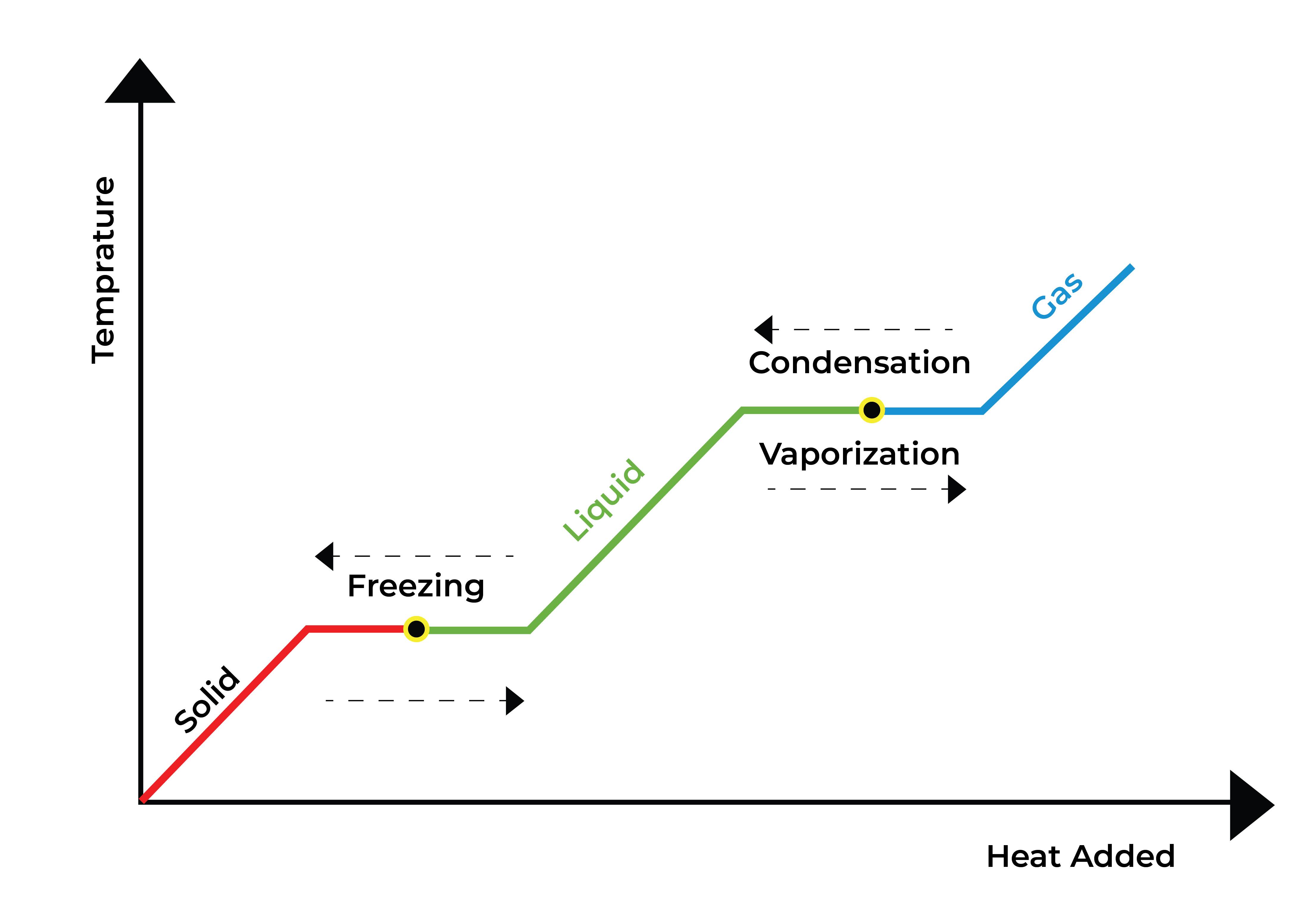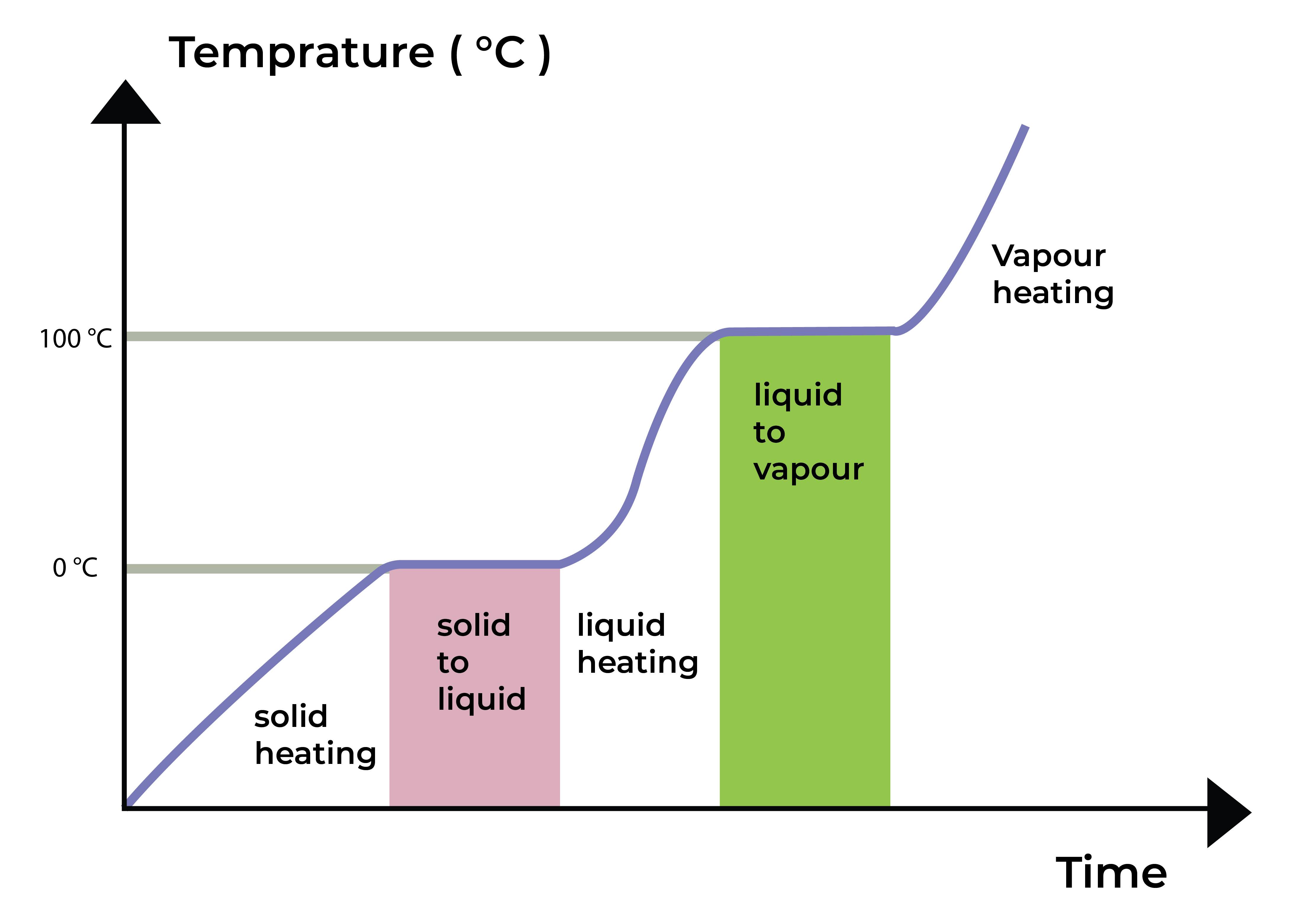Solidification
Grade 6 Science Worksheets
The process of turning a liquid into a solid is known as solidification. The molecules of the liquid slow down and create a stable structure as a result of a drop in temperature and/or an increase in pressure.
Table of Contents:
- What is Solidification?
- What Are The Physical Conditions Required For Solidification?
- Molecular Process Of Solidification
- What Is a Solidification Point?
- Difference Between Solidification & Melting Point
- Can Gases Be Solidified?
- Difference Between Solidification & Condensation
- Does Solidification Change The Chemical Makeup Of Matter?
- Difference Between Solidification & Chemical Reactions
- Exceptions To The Process Of Solidification
- FAQs
Solidification - Grade 6 Science Worksheet PDF
This is a free printable / downloadable PDF worksheet with practice problems and answers. You can also work on it online.
|
Untimed | |
Sign up with your email ID to access this free worksheet.
"We really love eTutorWorld!"
"We really love etutorworld!. Anand S and Pooja are excellent math teachers and are quick to respond with requests to tutor on any math topic!" - Kieran Y (via TrustSpot.io)
"My daughter gets distracted easily"
"My daughter gets distracted very easily and Ms. Medini and other teachers were patient with her and redirected her back to the courses.
With the help of Etutorworld, my daughter has been now selected in the Gifted and Talented Program for the school district"
- Nivea Sharma (via TrustSpot.io)
The freezing of water to form ice and cooling of molten metal to form solid metal objects are both examples of solidification.

What Are The Physical Conditions Required For Solidification?
When the conditions are right for the liquid molecules to arrange themselves into a more organized, stable structure, solidification takes place. Usually, this calls for a rise in pressure and/or a drop in temperature.
A liquid must have its temperature lowered below its melting point in order for it to solidify. Each substance has a unique freezing point that varies depending on its molecular makeup, atmospheric pressure, and the presence of any impurities.
Pressure, in addition to temperature, can affect how something solidifies.
For instance, an increase in pressure can cause a liquid’s freezing point to rise and its solidification temperature to rise. A drop in pressure, on the other hand, can raise the freezing point and make the liquid solidify at a lower temperature.
Not all liquids will solidify when their temperature is lowered to the freezing point, it should be noted. While some liquids may solidify at a temperature lower than their theoretical freezing point, such as those that contain dissolved solids or impurities, other liquids may solidify at a temperature higher than that.
Molecular Process Of Solidification
A drop in temperature or an increase in pressure, which results in the loss of kinetic energy and a reduction in the intermolecular distances of the gas particles, initiates the molecular process of condensation. As a result, the intermolecular forces of attraction between the particles become stronger and more bonds are formed between the particles.
Condensation happens in the molecular realm as follows:
1. Either a rise in pressure or a fall in temperature will result in a loss of kinetic energy and a corresponding slowing of the motion of the gas particles.
2. Strengthening of intermolecular forces: The intermolecular forces between the particles get stronger as the temperature or pressure drop.
3. Bond formation: As a result of the stronger intermolecular forces, the particles are able to form bonds with one another, which leads to the formation of a liquid.
4. Latent heat release: Latent heat is the energy needed to transform matter from a gas to a liquid, and it is frequently released during the condensation process.
5. It’s important to note that thermodynamics, which takes into account the relationship between temperature, pressure, volume, and energy in a system, can also be used to describe the condensation process. Enthalpy, a measurement of a system’s heat energy, can be used to explain how the strength of intermolecular forces increases during condensation.
What Is A Solidification Point?
The temperature at which a substance transitions from a liquid to a solid state is known as the solidification point, also referred to as the freezing point. This temperature varies with each substance and is influenced by the size of the particles and intermolecular forces, among other things.
When a pure substance freezes at its solidification point, which is a fixed temperature, the liquid turns into a solid. The solidification point for a mixture can differ and is influenced by the proportions of each component. Sometimes, adding a solute can make a solvent’s solidification point lower, causing a condition known as freezing-point depression.
It’s crucial to understand that the melting point, or the temperature at which a solid substance turns into a liquid, is not the same as the solidification point. Typically, the melting point is higher than the solidification point.
Difference Between Solidification & Melting Point
The physical characteristics of a substance that are related but distinct are the melting point and solidification point.
The temperature at which a liquid substance transforms into a solid state is known as the solidification point, also referred to as the freezing point. The liquid’s particles have enough kinetic energy at this temperature to overcome the intermolecular forces of attraction and transform the liquid into a solid.

On the other hand, the melting point is the temperature at which a substance transitions from a solid to a liquid state. The solid’s particles have enough kinetic energy at this temperature to overcome the intermolecular forces of attraction and transform the solid into a liquid.
Therefore, the melting point is the temperature at which a substance changes from a solid to a liquid, and the solidification point is the temperature at which a substance changes from a liquid to a solid.
It’s crucial to remember that the solidification point for a particular substance is typically lower than the melting point.
“There have been times when we booked them last minute, but the teachers have been extremely well-prepared and the help desk at etutorworld is very prompt.
Our kid is doing much better with a higher score.”
6th Grade Tutoring
eTutorWorld offers Personalized Online Tutoring for Math, Science, English, and Standardised Tests.
Our Tutoring Packs start at just under $22.49 per hour, and come with a moneyback guarantee.
Schedule a FREE Trial Session, and experience quality tutoring for yourself. (No credit card required.)
Can Gases Be Solidified?
Yes, through a process called condensation, gases can solidify. When a gas’s temperature is lowered to a level where its particles have sufficient kinetic energy to outweigh the intermolecular forces of attraction and solidify, this phenomenon takes place.
This process is frequently observed in daily life, such as when liquid water droplets are created when airborne water vapour condenses on a cold surface.
Deposition, which involves allowing a gas to cool so slowly that the particles have time to organize themselves into a crystalline structure, is another method for solidifying gases.
Neo, argon, and krypton are just a few examples of noble gases that can be created into solid forms using this method.
Difference Between Solidification & Condensation
Condensation and solidification are two separate physical processes that take place at various stages of a material’s transition from one state to another.
A gas turns into a liquid through the process of condensation when the temperature or pressure are reduced. The gas particles lose kinetic energy and their intermolecular distances shorten during condensation, enabling them to form bonds and create a liquid.
On the other hand, solidification is the process by which a liquid turns into a solid as a result of a drop in temperature. The liquid particles lose kinetic energy and their intermolecular distances shorten during solidification, enabling them to organize into a crystalline structure and create a solid.
In conclusion, solidification refers to the transformation of a liquid into a solid, whereas condensation refers to the transformation of a gas into a liquid. It’s crucial to remember that condensation precedes solidification because a liquid is required for solidification to occur.
Does Solidification Change The Chemical Makeup Of Matter?
In most cases, a substance’s chemical composition is unaffected by the process of solidification. The chemical bonds that hold the particles together do not change during solidification, which is simply a change in the physical state of matter from a liquid to a solid.
However, in some instances, solidification can lead to the formation of a different crystalline structure, which can change the material’s mechanical strength, thermal conductivity, and other physical characteristics like density.
The underlying chemical bonds and chemical composition of the material remain unaltered, but these changes can occasionally cause changes in the material’s chemical properties, such as its reactivity or stability.
It’s crucial to remember that the process of solidification can also cause impurities or defects to form within the crystalline structure, which can have a significant impact on the material’s properties.
These impurities or flaws can develop for a number of reasons, such as the presence of foreign particles, changes in cooling rate, or modifications to the chemical makeup of the material.
Difference Between Solidification & Chemical Reactions?
Solidification and chemical reactions are two distinct physical processes that take place in materials.
Through a change in the chemical bonds between their constituent atoms or molecules, one or more substances can be changed into one or more new substances in a chemical reaction. Chemical bonds are broken and formed during chemical reactions, which alter the chemical make-up of the substances involved.
On the other hand, solidification is the process by which a liquid turns into a solid as a result of a drop in temperature. The liquid particles lose kinetic energy and their intermolecular distances shorten during solidification, enabling them to organize into a crystalline structure and create a solid.
Given that the chemical bonds between the particles are unaltered, this process results in a physical rather than a chemical change.
For example, the reaction between hydrogen and oxygen to form water is a chemical reaction:
2H2 + O2 -> 2H2O
In this reaction, the hydrogen and oxygen molecules combine to form water molecules, and new chemical bonds are formed between the atoms.
On the other hand, when a liquid metal cools to below its melting point, it solidifies and forms a solid metal.
In conclusion, a substance’s chemical composition changes during a chemical reaction, whereas a substance’s physical state changes from a liquid to a solid during solidification, the substance’s chemical composition does not change.
Exceptions To The Process Of Solidification
Yes, there are a number of instances in which a substance does not behave as would be predicted based on its typical solidification behaviour. These consist of:
1. Supercooling: When a liquid’s temperature falls below the point at which it normally solidifies, it sometimes still retains its liquid state. When the liquid cannot solidify because there aren’t enough seed crystals or other crystal-forming impurities, this is referred to as supercooling.
2. Glass transition: The glass transition temperature is a property of certain materials, including glasses. The substance transforms from a rigid, glassy state to a more flexible, viscous state at this temperature. Since the substance continues to be a non-crystalline solid, this transition is not regarded as a process of solidification.
3. Rapid cooling or high pressure: This can cause some substances to solidify in an amorphous or non-crystalline form. Materials with unusual properties, like increased strength or transparency, may be created as a result of this.
4. Liquid-liquid phase transitions: Certain substances are capable of going through a liquid-liquid phase transition, in which one liquid transforms into another with a different chemical or molecular makeup. This procedure, which is also known as liquid-liquid demixing, is not regarded as a solidification procedure.
These anomalies show that the solidification process is not always a simple or predictable phenomenon and that it can be affected by a number of variables, such as temperature, pressure, and the presence of impurities or seed crystals.
Do You Stack Up Against the Best?
If you have 30 minutes, try our free diagnostics test and assess your skills.
FAQS
What does solidification mean?
A liquid turning into a solid as a result of a drop in temperature is known as solidification. The liquid particles’ kinetic energy is lost during solidification, and their intermolecular distances shorten, enabling them to organize into a crystalline structure and create a solid.
What distinguishes freezing from solidification?
Although the terms solidification and freezing are frequently used synonymously to describe the process by which a liquid turns into a solid, they can also have slightly different meanings. While the term “freezing” specifically refers to the process by which water turns from a liquid to a solid, the term “solidification” refers to the process of turning a liquid into a solid in general.
How do condensation and solidification differ from one another?
There are two distinct processes that can take place in materials: solidification and condensation. Condensation is the process by which a gas changes to a liquid due to an increase in pressure or a decrease in temperature, whereas solidification is the process by which a liquid changes to a solid due to a decrease in temperature.
What is a substance's point of solidification?
A substance’s solidification point is the temperature at which it transitions from a liquid to a solid. Depending on which way the transformation takes place, this temperature is frequently referred to as the melting or freezing point.
What elements can affect a substance's tendency to solidify?
A number of variables, such as temperature, pressure, the presence of impurities or seed crystals, the rate of cooling, and the presence of other substances in the environment, can affect how quickly a substance solidifies.
Can a substance's chemical composition change as it solidifies?
Solidification typically has no effect on a substance’s chemical composition. The chemical bonds that hold the particles together do not change during solidification, which is simply a change in the physical state of matter from a liquid to a solid. The formation of impurities or defects within the crystalline structure, however, can occasionally occur during solidification and have an effect on the material’s properties.

Kathleen Currence is one of the founders of eTutorWorld. Previously a middle school principal in Kansas City School District, she has an MA in Education from the University of Dayton, Ohio. She is a prolific writer, and likes to explain Science topics in student-friendly language. LinkedIn Profile
Affordable Tutoring Now Starts at Just $22.49
eTutorWorld offers affordable one-on-one live tutoring over the web for Grades K-12. We are also a leading provider of Test Prep help for Standardized Tests (SCAT, CogAT, MAP, SSAT, SAT, ACT, ISEE, and AP).
What makes eTutorWorld stand apart are: flexibility in lesson scheduling, quality of hand-picked tutors, assignment of tutors based on academic counseling and diagnostic tests of each student, and our 100% money-back guarantee.
Whether you have never tried personalized online tutoring before or are looking for better tutors and flexibility at an affordable price point, schedule a FREE TRIAL Session with us today.
*There is no purchase obligation or credit card requirement
Grade 6 Science Worksheets
- Inquiry process
- Nature of Science
- Scientific Inquiry
- Inquiry, Analysis and Problem Solving
- Ethical Practices
- Science and Society
- Biotic and Abiotic Factors
- Impact of Organisms
- Adaptation
- Spheres of Earth
- Natural Resources
- Environmental Issues
- Conservation of Earth
- Understanding Technology
- Abilities To Do Technological Design
- Structure of Earth
- Solar System
- Rocks and Fossils
- Earth Systems
- Plate Tectonics
- Evolution
- Magnetic Field of Earth
- Geologic Time
- Materials and Processes That Shape a Planet
- Astronomy
- Ecology
- Energy
- Kinetic and Potential Energy
- Energy Transfer
- Matter and its Structure
- States of Matter
- Physical and Chemical Changes
- Force and Motion
- Electricity and Magnetism
- Wave Interactions
- Sound
- Light
- Introduction to Life Science
- The Origin & History of Life On Earth
- Plant and Animal Cells
- Parts of a Cell
- The Cell Cycle
- How Living Organisms Get Energy
- Classification of Organisms
- How Plants Grow & Reproduce
- The Human Respiratory System
- The Human Cardiovascular System
- The Human Digestive System
- The Human Endocrine Systems
- The Human Nervous System
- The Human Muscular System
- The Human Skeletal System
IN THE NEWS

Our mission is to provide high quality online tutoring services, using state of the art Internet technology, to school students worldwide.
Online test prep and practice
SCAT
SSAT
ISEE
PSAT
SAT
ACT
AP Exam
Science Tutoring
Physics Tutoring
Chemistry Tutoring
Biology Tutoring
Math Tutoring
Pre-Algebra Tutoring
Algebra Tutoring
Pre Calculus Tutoring
Calculus Tutoring
Geometry Tutoring
Trigonometry Tutoring
Statistics Tutoring
Quick links
Free Worksheets
Fact sheet
Sales Partner Opportunities
Parents
Passive Fundraising
Virtual Fundraising
Our Expert Tutors
Safe and Secure Tutoring
Interactive Online Tutoring
After School Tutoring
Elementary School Tutoring
Middle School Tutoring
High School Tutoring
Home Work Help
Math Tutors New York City
Press
©2022 eTutorWorld Terms of use Privacy Policy Site by Little Red Bird
©2022 eTutorWorld
Terms of use
Privacy Policy
Site by Little Red Bird










